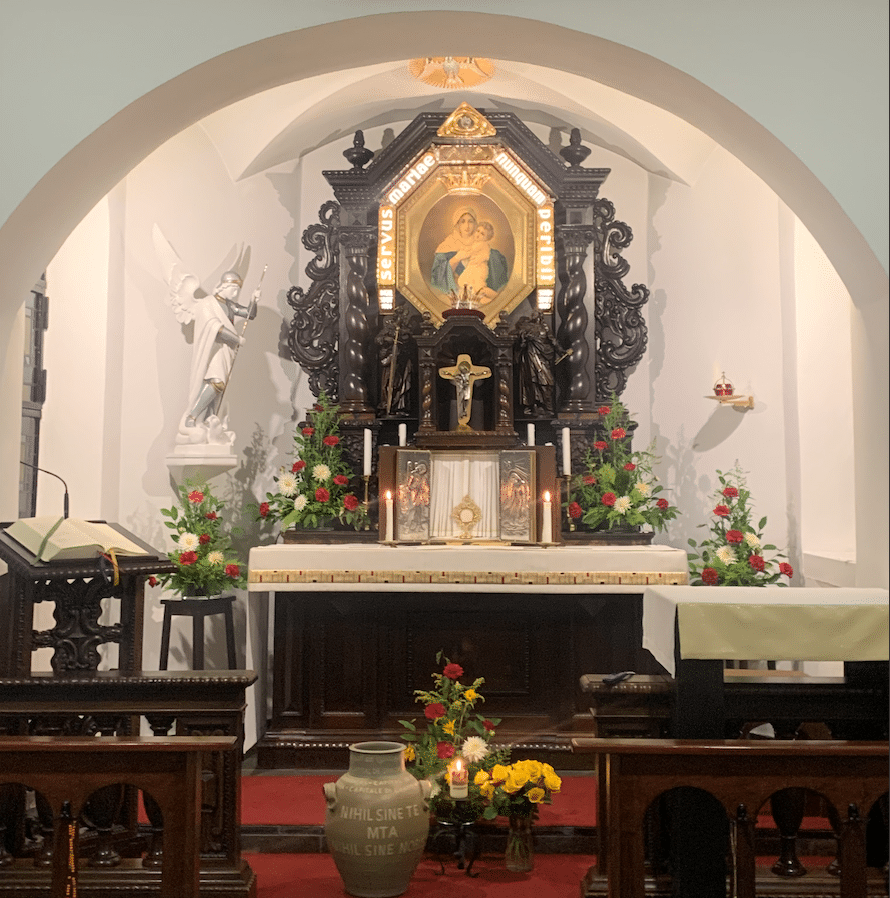Throughout each month it is filled with slips of paper placed there by many people who visit the Mother Thrice Admirable, Queen and Victress of Schoenstatt.
What does this jug represent?
This symbol makes reference to the Gospel text about the wedding at Cana where Jesus transformed water into wine: “There were six stone water jars there for the Jewish rites of purification, each holding twenty or thirty gallons. Jesus said to the servants, ‘Fill the jars with water.’ And they filled them up to the brim.” (John 2: 1-11)

What is the relationship between the jug and the Shrine?
Just like water is essential for living things, the capital of grace is the nourishment for the spiritual life of the Shrine. The capital of grace gathers the personal contributions of all those who offer their sacrifices and joys, especially in the field of self-education; those who wish to be everyday saints.
These personal contributions to the capital of grace, when united with Christ’s sacrifice, have an immeasurable value. What we place in the jug are the gifts of love which are offered to the Blessed Virgin’s capital of grace so that She may distribute them to those in need. Capital of grace is the name given to the treasure that the Blessed Virgin distributes from her Shrine.

What are those pieces of paper in the jug?
Throughout each month, the members of the Schoenstatt Movement write their contributions to the capital of grace in notebooks or pieces of paper as a written expression of their offerings. These slips of paper, which represent one’s effort to reach a saintly life, are placed in the jug.
Following the example of what took place in Cana, the imperfect contributions of each one of us are united with Christ’s perfect donation so that a miracle may happen: Jesus transforms the water (our offerings) into good wine and the Blessed Virgin distributes it from the Shrine.
In many places, on the 18th day of the month, these slips of paper are burned in a bonfire, raising all the contributions to heaven.
